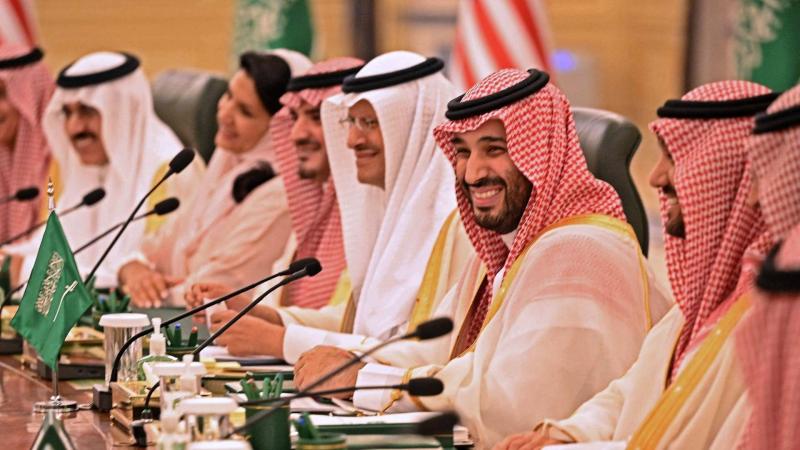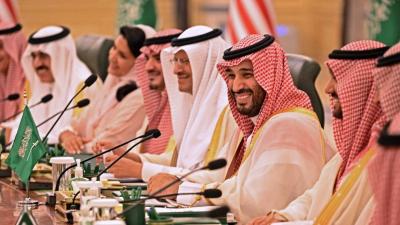When Chinese leader Mao Zedong wanted to reform China's present and future in 1956, he raised the slogan "Let a hundred flowers bloom" to gather all the energies of the Chinese across various directions to support change. However, the party's inherited socialist and communist heritage acted as a guardian of stagnation, hindering Mao's attempts, forcing him to change the slogan to suggest that planting requires uprooting toxic plants first... Thus, no flower bloomed, nor was any plant uprooted for a long time.
I will return to this story later.
The historical transformation on all levels in Saudi Arabia is not solely about action but also about reaction. The new leadership recognizes that it has opened one of the most rugged and difficult paths to cross the bridge to a better future and fundamental reforms, making optimal use of all existing resources in the country. They believe that the only way to achieve this is through work, work, and more work.
Simultaneously, a new line has been drawn in dealing with the counter-wars waged against its current approach, which involves addressing the goals of that war by relying solely on numbers and achievements. The Saudi leadership does not want to waste time or drain efforts in responding to every campaign against the ongoing reforms and prefers that each team in every sector continues its work at the set pace. Any project’s achievement within the stipulated time frame—or even earlier—and reaching certain development targets as laid out in the plans is prioritized, along with following through with investment programs without any backward glance or concern with reports from foreign or Arab newspapers or politically motivated international bodies with known objectives and aspirations.
In short, the lesson that Saudi Arabia presents to its nearby peers and distant parties is "responding with numbers," relying on a high degree of transparency in showcasing its achievements and delays with full explanations given. Diving into the numbers that encompass all sectors in the Kingdom does not merely place you on the brink of the daytime and nighttime vision of the progress made; it reveals the immense effort being exerted to transition the country from one stage to another.
Numbers accessible to everyone and presenting them is part of the required transparency to evaluate work, enhance community partnership, and adopt the principle of reward and punishment. These numbers require major institutions to gather, keep pace with, and draw conclusions from, whether at the level of a cooperative society or by allocating a share of the stocks of giant institutions like "Aramco." Everything in between: numbers on tourism, social services, economic, health, and educational sectors, new cities, massive infrastructure projects, technology, arts, culture, museums, and historical sites, among others.
Naturally, there is not enough space in an article to mention all the numbers, and it is very easy to access them from their sources, such as the General Authority for Statistics and the National Competitiveness Center. It suffices to mention that despite all the campaigns accompanying the Saudi investment movement, the Public Investment Fund achieved $25 billion in profit from investment activities last year, and international organizations reported that tourism within the Kingdom in 2023 reached over 100 million tourists from both inside and outside the country, who spent 135 billion riyals—an increase of 42.8% compared to 2022. Moreover, Saudi Arabia advanced to the fourth rank in 2024 among the G20 countries, supported by improved business regulations and infrastructure, reduced unemployment rates among Saudis, and significant growth in non-oil sectors at the beginning of this year according to a World Bank expert mission report.
Numbers in the Kingdom have become an integral part of the lives of Saudis in this historical transformation, which they are witnessing and participating in, especially among the youth. Notably, except for one or two responses when necessary and at distant intervals, decision-makers in the Kingdom do not seem to care about skepticism campaigns regardless of how significant their international references may be. They live with their numbers regardless of changes, and their sole measure is the interest of Saudis and their future.
An objective follow-up on what is happening in the Kingdom, especially from us in the Gulf, leads us to say that a million flowers are blooming despite all attempts to pull back and put up barriers to progress. The difference between Riyadh and Beijing is that Mao Zedong's calculations were partisan while Mohammed bin Salman's calculations are Saudi. Mao’s priority stalled the blooming flowers to uproot what he considered toxic plants, while Bin Salman’s priorities aim to generalize the blooming of flowers in all spaces, allowing their beauty, charm, fragrances, and colors to thrive, while any non-beneficial plant will die off on its own, no matter how long its roots may be.
Mao’s vision fell apart because veteran guards of socialism encircled the dreams of youth, whereas Bin Salman’s vision succeeds because he approached it with the spirit of youth, for youth, and for a better future for the predominantly young Saudi society.
May God bless the vision, experience, change, and development.




